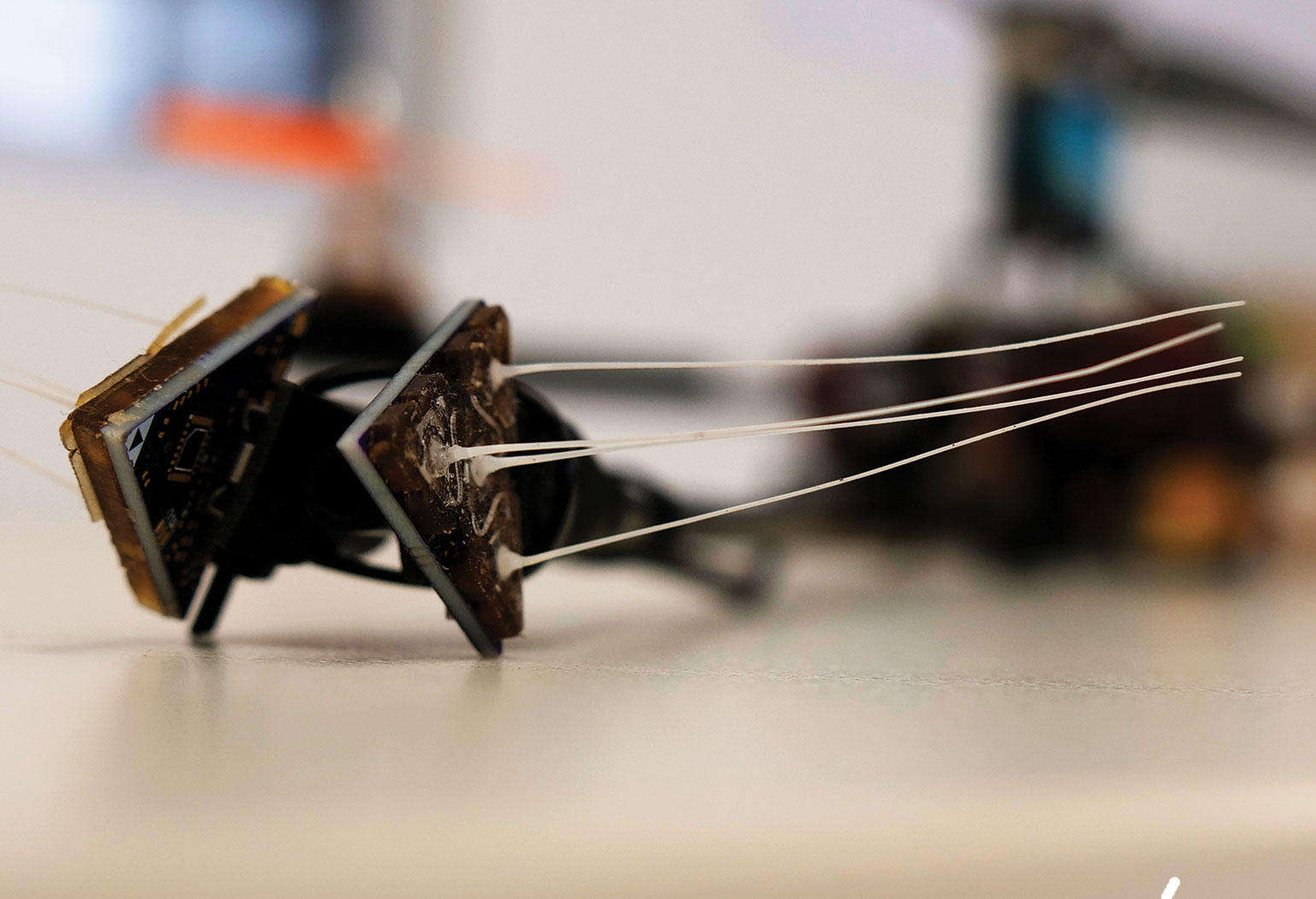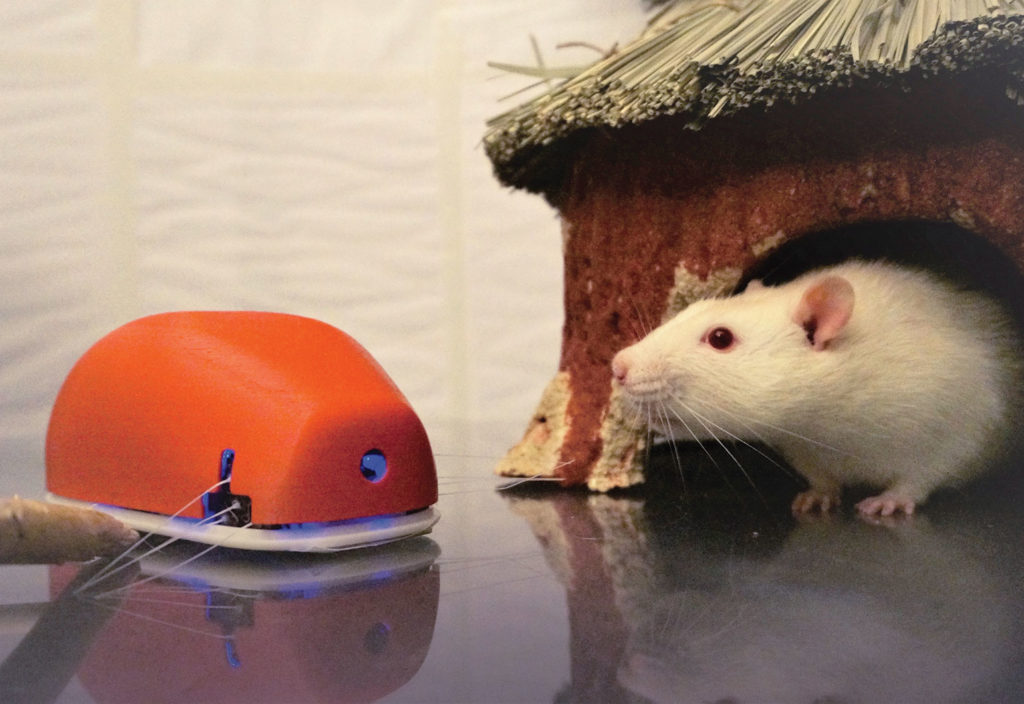Robots have a habit of getting up-close and personal. One engineer turned to rats to solve the problem.
If you want to know why Associate Professor Pauline Pounds is putting whiskers on drones, it all begins with rude robots.
Robots, you see, have no sense of personal space, and for we human beings who value our boundaries, that can make robots difficult to deal with.
“A robot doesn’t have that sense because we typically build robots to rely on computer vision,” said Pounds, who is from the University of Queensland’s School of Information Technology and Electrical Engineering.
“We build them to rely on laser scanners and these sorts of things, and when they reach out to touch you, they may not actually have a really good sense that they’ve entered your personal space until they’ve already come into contact with you.”
To help these anti-social robots out, Pounds turned to an expert in social interaction from the natural world: rats.
“We know that rats require their whiskers to navigate their environment around them,” she explained.
“We said, ‘Wow, wouldn’t it be great if we had whiskers on our robot?’ And so, then we realised, ‘Wait a minute, we could just build a system that uses near-contact in social situations, whether it’s a rat or for a human’.”
It sounds fanciful, but putting whisker sensors on a robot could prove to have a lot of uses — far beyond helping them to stay out of the way of their human associates.
“We can use it for general sensing in the environment,” Pounds said.
“Not just in a social context, but rats use their whiskers if they’re navigating through narrow passageways or through foliage and these sorts of things, so too can we build robots with whiskers as part of their general navigation system.”

One thing that makes these artificial whiskers so effective is how sensitive they are. Pounds said they can measure forces of just 3.3 μN, registering a mass of 0.3 mg — lighter than a flea.
“They work by using very, very fine pressure sensors,” she said.
“They’re MEMS barometers, micro-electromechanical system barometers, that are often used in things like cell phones for giving a measurement of altitude and used by drones for the same purpose.”
Researchers at Harvard University had already shown how these MEMS barometers, when potted in polyurethane rubber, could be used as a contact sensor. Pounds adapted the technology so it could be used as a pre-contact sensor.
“By putting a long thin whisker element on it, it acts like a force multiplier, so very small forces at the tip can become very large forces at the base through mechanical advantage,” she explains.
“That’s how we get this exquisite sensitivity that we’re able to demonstrate.”
Because the whisker sensors are so cheap, so lightweight and so versatile, they have some advantages over existing technology that robots use to navigate the spaces around them.
Cameras or light detection and ranging — LIDAR — for instance, do not work in dark or smoky environments. The whiskers, however, can still pick up environmental measurements in such situations by feeling their way along, meaning robots equipped with the technology would be more capable of going to places too dangerous for humans.
Pounds sees a broad range of potential applications for the sensors.
“We haven’t even begun to explore what we could do with this technology or what future revisions might be capable of,” she said.
“An application that I’m particularly interested in is to coat the wings of a man-scale aircraft to be able to get direct immediate measurements of fluid flow parameters over the aircraft so you can tell instantly whether or not the wing is stalling in some part, whether or not the fluid flow is even, whether you have cross-flow phenomena and what your pressure field looks like.”
That could help engineers design more efficient, more capable aircraft. And Pounds suggests another possibility: using that same function to measure airflow over professional cyclists.
“I think we’re going to continue to find amazing places where having a little velocity sensor, a little context sensor, a little pressure sensor — all in one neat package — provides all sorts of new data that just hasn’t been practical to collect before now,” she said.
Whisked away
It’s not just robots that can make use of highly sensitive whisker sensors.
“Drones in particular have the added interesting feature that they can use those whiskers as a velocity sensor,” said Pounds.
“We can use the force of aerodynamic pressure pushing over the whisker as the drone flies through the air to get a measurement of wind speed, which is very difficult to measure around an aircraft and especially something like a low speed drone flying in human environments.”
And because each sensor weighs around 5 g, there is little cost to adding them to aircraft.
“I think that in the future this will form part of the standard tool kit of sensors that every flying aircraft in human environments will use,” Pounds said.
